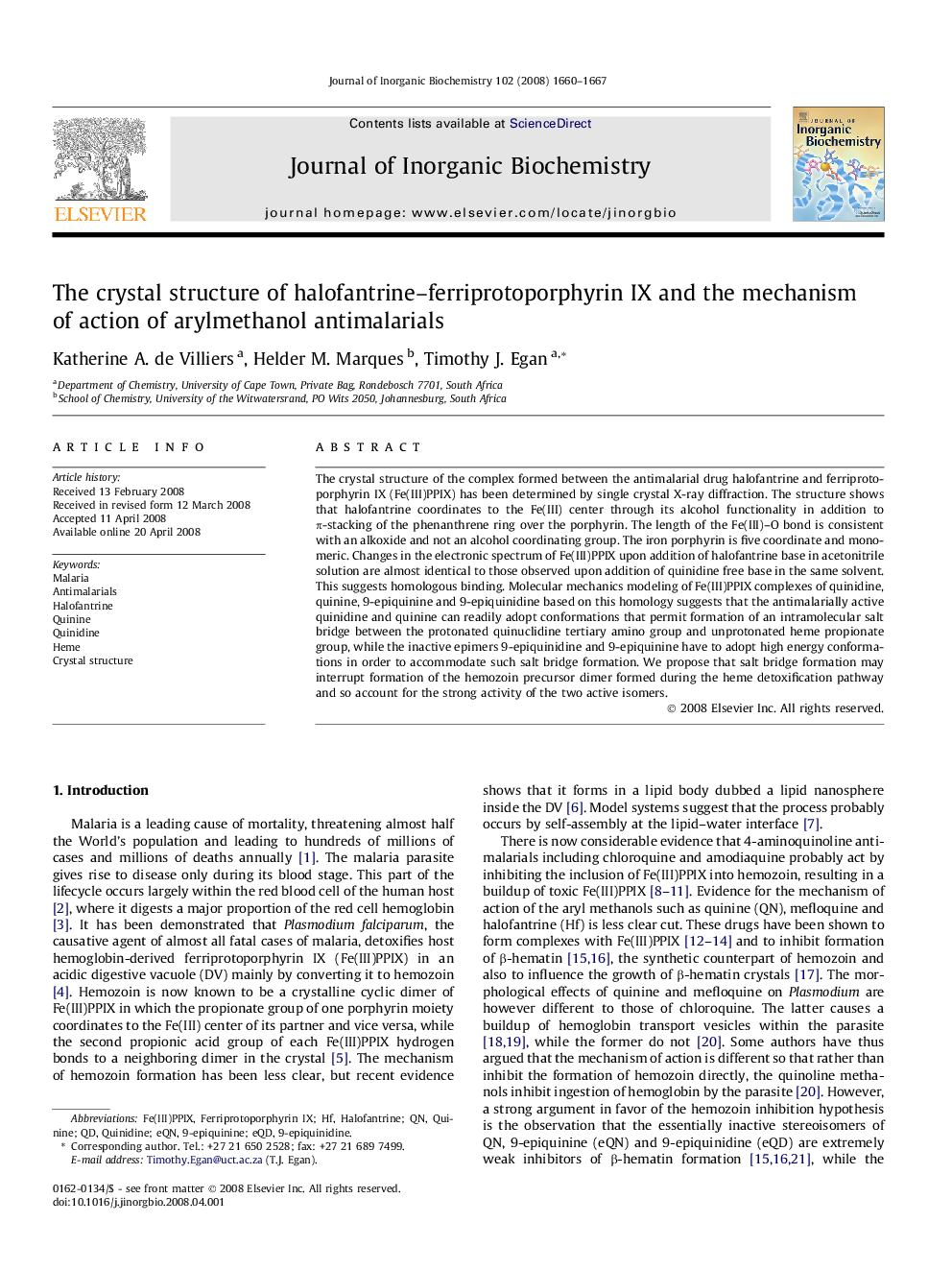| Article ID | Journal | Published Year | Pages | File Type |
|---|---|---|---|---|
| 1316349 | Journal of Inorganic Biochemistry | 2008 | 8 Pages |
The crystal structure of the complex formed between the antimalarial drug halofantrine and ferriprotoporphyrin IX (Fe(III)PPIX) has been determined by single crystal X-ray diffraction. The structure shows that halofantrine coordinates to the Fe(III) center through its alcohol functionality in addition to π-stacking of the phenanthrene ring over the porphyrin. The length of the Fe(III)–O bond is consistent with an alkoxide and not an alcohol coordinating group. The iron porphyrin is five coordinate and monomeric. Changes in the electronic spectrum of Fe(III)PPIX upon addition of halofantrine base in acetonitrile solution are almost identical to those observed upon addition of quinidine free base in the same solvent. This suggests homologous binding. Molecular mechanics modeling of Fe(III)PPIX complexes of quinidine, quinine, 9-epiquinine and 9-epiquinidine based on this homology suggests that the antimalarially active quinidine and quinine can readily adopt conformations that permit formation of an intramolecular salt bridge between the protonated quinuclidine tertiary amino group and unprotonated heme propionate group, while the inactive epimers 9-epiquinidine and 9-epiquinine have to adopt high energy conformations in order to accommodate such salt bridge formation. We propose that salt bridge formation may interrupt formation of the hemozoin precursor dimer formed during the heme detoxification pathway and so account for the strong activity of the two active isomers.
